Plug’n Drive’s blog is now located at plugndrive.ca/blog.
Ontario’s EV Support Program Is On The Money
This post was jointly written by Cara Clairman, President and CEO, Plug’n Drive, with Keith Brooks, Programs Director at Environmental Defence, a Canadian environmental organization working towards a greener, healthier and prosperous life for all.
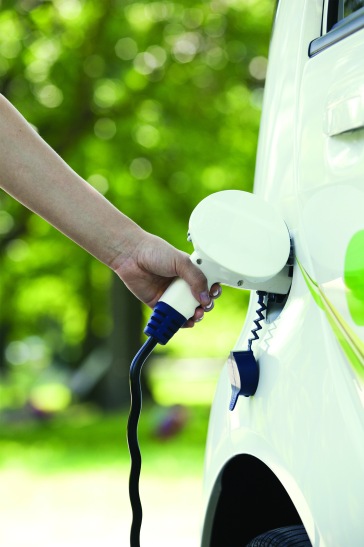 Ontario’s five-year Climate Change Action Plan, released last year, contains over 80 actions that the province will pursue as it fights climate change. Among the actions listed is a rebate program offering incentives of up to $14,000 towards the purchase of an electric car. Putting dollars into electric cars makes a lot of sense.
Ontario’s five-year Climate Change Action Plan, released last year, contains over 80 actions that the province will pursue as it fights climate change. Among the actions listed is a rebate program offering incentives of up to $14,000 towards the purchase of an electric car. Putting dollars into electric cars makes a lot of sense.
Transportation is the largest source of carbon pollution in Ontario, and personal vehicles are the largest contributor to those emissions. The surest way to reduce emissions from personal transportation is to electrify the vehicle fleet – which will bring big climate benefits in Ontario because the province’s electricity sector is almost completely decarbonized, thanks to the coal phase-out.
And one of the most effective ways to get people into electric cars is by offering incentives.
Forecasts for Electric Vehicle (EV) sales are being adjusted up dramatically as automakers work feverishly to roll out affordable electric cars with longer ranges, intended to compete with the Chevy Bolt – the car of the year – and Tesla’s much anticipated Model 3. But, many of these cars are still a few years away, as is some of the infrastructure needed to support a mass move from internal combustion engines to electric vehicles.
But there are still very good reasons to propel EV sales forward now. You have to begin somewhere to build momentum, which is what’s happening in Norway. Today, less than 5% of cars in Norway are electric, but the country’s transport minister said it is realistic for Norway to end the sales of fossil fuel powered cars by 2025. According to the Economist Magazine, fiscal incentives, not an outright ban, will bring this about. Knowing that, Ontarians should be happy to learn that this province offers the most generous incentives of any jurisdiction in North America.
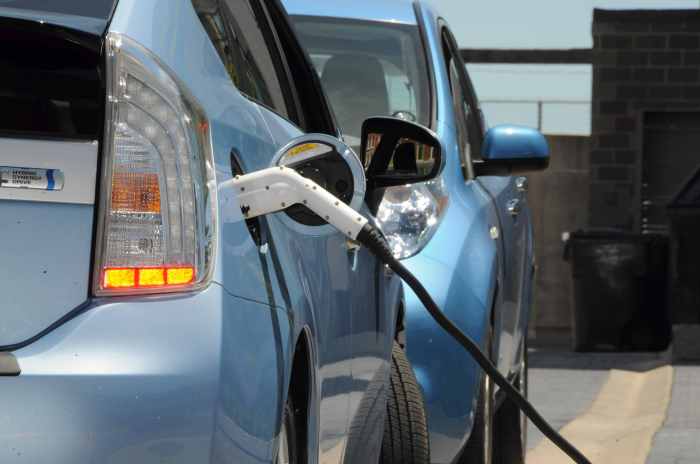
There are other reasons for Ontario to support electric cars. For one, unlike oil and gas, low carbon electricity is made here in Ontario and spending on electricity comes back to Ontario in the form of local infrastructure and local jobs. Plus, Ontario has a surplus of electricity at night right now, which we sometimes export at a loss. It would make more sense to use that low-carbon power here – to benefit the environment and our own economy, which is why Ontario’s Climate Action Plan also plans to offer free overnight charging for electric cars.
The move to electric vehicles will also bring health benefits, just as the coal phase-out did. A recent report from the American Lung Association of California found that cars are responsible for $37 billion in health and climate costs each year. Moving to electric cars, the study found, would make a huge dent in that.
One of the criticisms of Ontario’s EV incentive program is that luxury vehicles that few can afford receive subsidies up to the $14,000 maximum. Given that the program’s aim is to increase the number of EVs on the road, it makes sense to offer incentives for cars of various price ranges. And when measured in percentage terms, the incentive program is progressive relative to car price. The province offers almost 50% for the least expensive EV, almost 40% for fairly affordable ones like the Nissan Leaf, and about 15% or less for luxury vehicles. And there are some very high priced cars that get no incentive.
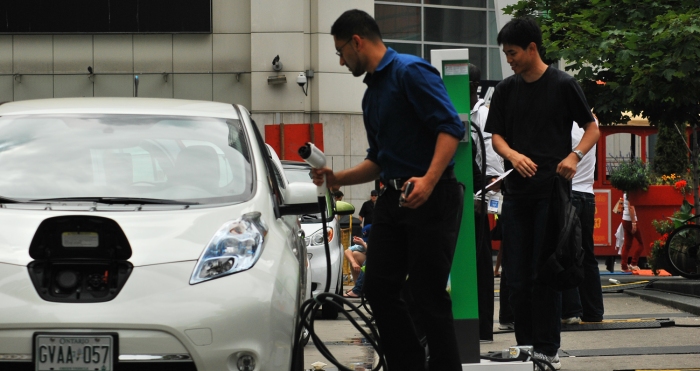
It’s also worth noting that Ontario’s subsidies are now being paid for from revenue from the cap-and-trade program – not from taxes – which also makes a lot of sense. Carbon pricing alone isn’t enough to fight climate change. And while there are those who argue that carbon pricing should be revenue neutral, the reality is that the most effective way to reduce emissions is to recycle the revenue back into reducing GHGs.
Subsides for electric cars won’t be needed forever. Electric cars prices are coming down, and EVs will win the future, which is why forecasts for EV sales are being boosted. Bloomberg estimates that EVs will cost the same as fossil-fueled cars by 2022. But subsidies are needed for now.
And if you want to dispute subsidies, we suggest taking issue with the subsidies given out to oil and gas companies, which are much larger than those for electric cars, and which folks at Bloomberg have called “the world’s dumbest policy.” Subsides to oil and gas work against carbon pricing. EV subsidies, on the other hand, will act as a complement to carbon pricing and, as such, they belong in Ontario’s Climate Change Action Plan.
I’m going to miss “range anxiety”
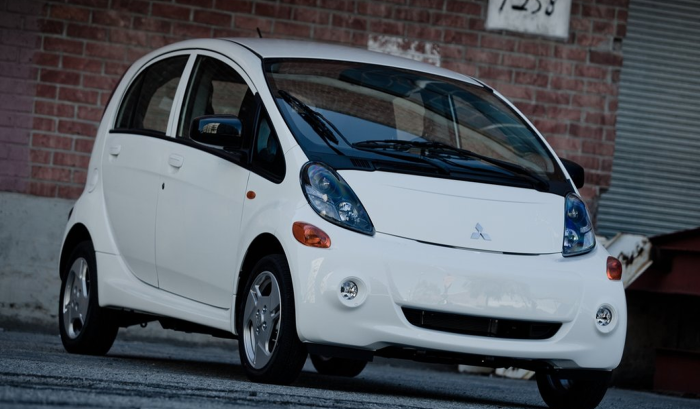
A Blog by Ron Groves, Plug’n Drive’s Manager of Education and Outreach
One of the thrills of being an early adopter is the adventure of pioneering something new!
Five years ago, the first electric and plug-in hybrid cars came to the market in Canada from General Motors, Mitsubishi and Nissan. These early EVs led the way in advanced battery technology, all-new power electronics, standardised plug connectors and many other advances that harnessed electricity as a transportation fuel.
Some would argue that these new EVs were odd looking, others couldn’t understand the benefit of “re-fuelling” at home. But most could identify the difference between electric range and gas range. 100 to 150 kms of electric range vs. 600 kms on a tank of Dino- juice was too big a gap for most drivers to get their head around.
In those early days, our family had the use of an all electric Mitsubishi i-MiEV with an average range of about 120 kms. When I told my friends about the wonder of driving without fossil fuel they thought that was a great idea. But when I mentioned the i-MiEV’s range they smiled politely and quietly scratched their heads in bemusement as to how useful I was going to find such a vehicle.
Admittedly, the spunky i-MiEV my wife named ‘Sparky’ took some getting used to, but with careful planning, travelling around Toronto was pretty easy. Then winter hit and that is when the term “range anxiety” was probably first coined. The smallish 16 kWh battery lost 1/3 of its range in the cold and that is without the heater on.
It was then that the pioneering spirit of early adopters kicked-in so we could get where we were going. We learned to preheat the car’s interior when connected to the grid using the Dick Tracy remote on the key chain. Bum warmers were mandatory and allowed for warm backside, frozen nose driving using the defroster sparingly to see out the windshield. Most EVs in the day had an Eco Mode that cut back power for greater range at the cost of some performance. I hated it! I preferred the max regenerative Braking Mode that fed precious electrons back into the battery every time I braked or went downhill.
All EVs have some form of driving coach built into the dash to help the driver learn habits that saved energy. Our eyes never strayed from the i-MiEV’s bright red needle that swung from “power” to “charge” as you drove. That little ‘Sparky’ had the best energy coach I ever drove. Today I can get into any EV and easily hit or exceed the max range of the battery because of the stingy energy habits I learned driving with ‘Sparky’.
Which brings me to today and the EVs our family drives now. The Nissan LEAF with a 30 kWh battery and almost 200 kms of range, the BMW i3 with a 33 kWh battery and an easy 200 kms of range. As the Monty python skit goes, “Luxury!”. We don’t give range hardly a thought. These EVs accommodate 90% of our family’s driving needs.
I’m going to share with you a story from this past weekend. My wife and I accepted an invite to a friend’s cottage for the day; a 90 minute drive away. This would be all highway, hot summer driving with AC on. And we were coming back the same day. There are no DC Quick chargers on our route (by next year there will be 200 across Ontario). We would be able to plug-in at the cottage and charge at 110 volts. This would recover about 8 kms per hour. We were there for eight hours. So while we swam, ate, boated, sunbathed and generally did cottage stuff, ‘Fritz’ (the electric i3) noshed away on electrons from our friends cottage. That evening we unplugged, set the cruise for 110, and silently, electrically, wooshed our way home. “Range anxiety”? Hah! It’s banished from the lexicon as new and better technology takes centre stage.
You will recall I said that these latest EVs can handle 90% of my family’s driving needs. The last 10% is not going to come from the vehicle but from the electric refuelling infrastructure being installed across Ontario (and Canada) as we speak. Able to recharge an EV battery in 30 minutes or less, these stations will give EVs the same range capability as gas cars.
So it looks like my adventurous EV pioneering days are over. Sadly, I will have to find another outlet that challenges me to push barriers and seek new truths because driving an EV and getting to my destination worry free has become as easy as getting the groceries, as simple as driving downtown, as convenient as talking on the phone, as comfortable as driving to Grandma’s…. ah, you get the idea. Fill in your own example…
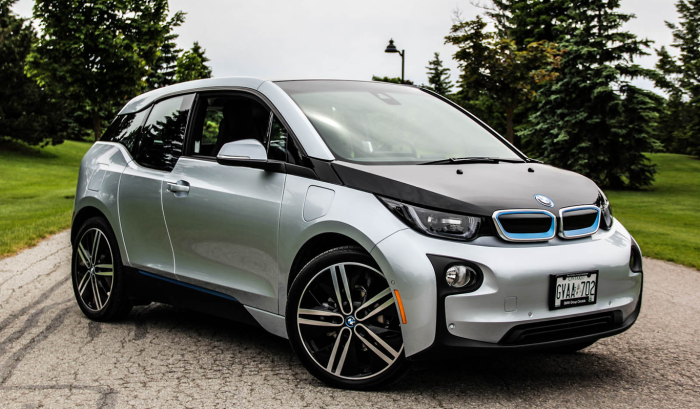
OEB Staff Bulletin on EV Charging
A guest Blog from Travis Allan, DeMarco Allan LLP
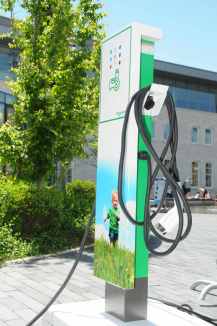 On July 7, 2016 the Ontario Energy Board (OEB) released a bulletin setting out OEB Staff’s view that ownership or operation of an Electric Vehicle (EV) charging station and the selling of EV charging services from such facilities do not constitute distribution or retailing of electricity. Staff also believes that electricity distributors are not precluded from owning and operating EV charging stations if the equipment provides for the management of load in keeping with Ontario’s goals for electricity conservation.
On July 7, 2016 the Ontario Energy Board (OEB) released a bulletin setting out OEB Staff’s view that ownership or operation of an Electric Vehicle (EV) charging station and the selling of EV charging services from such facilities do not constitute distribution or retailing of electricity. Staff also believes that electricity distributors are not precluded from owning and operating EV charging stations if the equipment provides for the management of load in keeping with Ontario’s goals for electricity conservation.
Staff bulletins of this nature do not bind the OEB in future decisions, but they are important sources of information and guidance for electricity industry participants.
If the OEB agrees with staff’s view, EV charging station owners and operators will not require distributor licenses to receive payment for EV charging services and regulated Ontario electricity distributors will be able to own and operate EV charging stations directly, rather than through an affiliate, subject to restrictions. These restrictions may support the uptake of “smart” charging, which allows distributors to control EV charging times and speeds.
OEB staff is of the opinion that an EV charging station[1] is not an electricity distribution system because EV charging stations do not provide distribution capability for loads other than EVs. As a result, OEB staff believes a person who owns an EV charging station is not required to obtain a distributor license from the OEB.
In a related conclusion, OEB staff believes the act of selling or offering to sell EV charging services does not constitute “retailing” and, therefore, does not require an OEB retailer license. OEB staff notes that persons selling or offering to sell EV charging services are providing a complete “vehicle refueling” service as compared to just commodity electricity and, unlike a standard electricity supply service, EV charging services can only be used to recharge an EV.
OEB staff holds the view that licensed electricity distributors are not precluded from owning and operating EV charging stations so long as the equipment provides for the management of load in keeping with the Government’s goals for electricity conservation. Typically, distributors are restricted from carrying on any business other than distributing electricity and, as explained above, OEB staff does not believe that owning and operating EV charging stations constitutes a distribution system or retailing electricity. OEB staff believes, however, that exceptions to this rule under Ontario Energy Board Act, 1998 s.71(2) relating to the promotion of electricity conservation and the efficient use of electricity as well as load management apply.[2] Specifically, EV charging can help optimize the use of assets by making more demand response tools available to distributors and facilitating off-peak charging. Having distributors involved in owing and operating EV charging stations, staff believes, may help facilitate load management and the efficient use of electricity.
OEB staff’s qualification that the equipment should provide for the “management of load” is likely significant. While some “smart” EV charging equipment is able to help distributors manage when and how quickly users charge, not all EV charging equipment contains these features. Information about Canada’s first residential smart charging pilot conducted by CrossChasm in partnership with Toronto Hydro can be found here.
For more information on electric vehicle policy, contact Travis Allan.
Our Ludicrous Idea

A guest Blog from Silke – TeslaXCanada
You all know how difficult it can be to follow up on a ‘ludicrous’ idea, but that’s exactly what my husband Rolf and I are doing this summer. If we learned one thing from our inspiration, Elon Musk, is that ‘ludicrous’ doesn’t mean impossible.
So, here we are, a few weeks away from our cross Canada trip in our 100% electric Tesla Model X towing a camping trailer with a solar panel roof. We are hoping to increase awareness and inspire people to switch to sustainable energy, such as solar, and sustainable transportation, such as 100% electric cars. Our motto: “Because future generations need our voice and our actions NOW!”
Our recent 15,000 km round trip in our Tesla Model S from Victoria British Columbia to Fort Lauderdale, Florida and back was a test run in more ways than one. Never having done social media or drone videography before, we faced and completed some challenging tasks and learned a lot in the process. 15,000 km in a 100% electric car later, we are almost ready to leave British Columbia for the second time and head East across Canada to Newfoundland. All we need now need is our Model X.
Rolf has been busy working on the eight 100 watt solar panels on the trailer’s roof, as well as the lithium batteries and inverter. A test has proven that we could charge the Model X from the camping trailer’s batteries at a speed of 6 km/hour. I have been busy spreading the word about our trip and organizing our participation in the Victoria Day Parade on May 23 as part of the Victoria EV Club’s electric car convoy.
Along our way across Canada, we hope to meet with lots of people, discussing their view of electric cars and solar energy, answering questions, sharing our experience with EV camping, showing that driving a 100% electric car over great distances is doable and fun and maybe even inspire others to follow in our footsteps.
We will face two major challenges on our trip across Canada – two that we are aware of, that is ;-). One unknown is the effect on driving range that towing our trailer will have. Second, there are no superchargers between Red Deer Alberta and the Great Lakes. We will rely heavily on Sun Country Highway chargers, other EV chargers and camp ground electricity. That also means that we really have no idea how far we can get per day. We do want to take it slow, though, since this is supposed to be a vacation, a trip that has been on our bucket list for many years. (We just never thought we would end up doing it in an electric car!). We want to enjoy and show off our beautiful country, our home of choice, that we love so much. Not to forget, I’m looking forward to some beautiful dog walks for our dog and co-pilot Kye.
A few places that we already know we want to visit are Red Deer and Drumheller in Alberta, Yorkton in Saskatchewan, Niagara Falls, Toronto and probably Windsor in Ontario, Saint-Nicolas in Quebec and, of course, Cavendish in the Prince Edward Islands. With regard to other places, we hope to hear from locals about the places they think are extraordinary and a must-see. We are going to cover our trip via our Blog TeslaXCanada.com, Facebook, Twitter, Instagram and YouTube. Please, do not hesitate to get in touch with us with regard to questions, suggestions, or anything else you would like to share with us; and, please, let the world know about our ‘ludicrous’ idea! Thank you!
Rolf, Silke and dog Kye